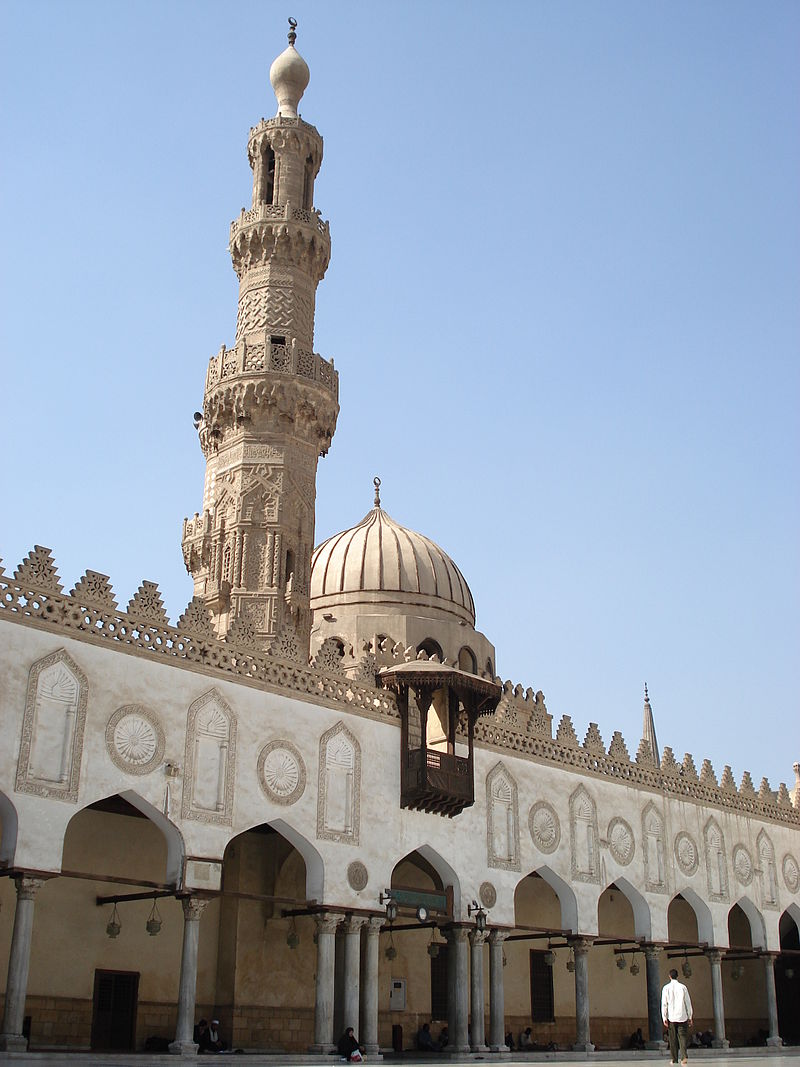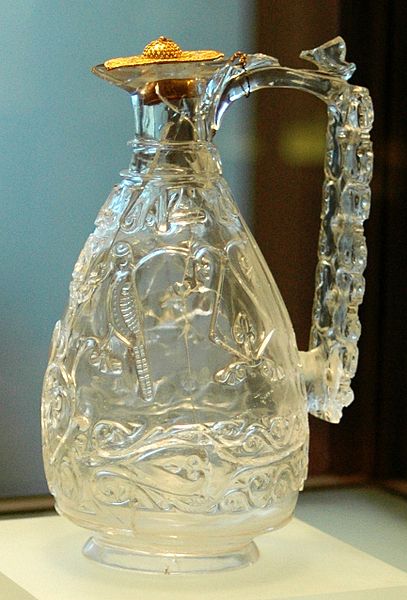| |
Fatimid Caliphate (909-1171) |
- “Halife” sanını kullanmayı kabul eden Fatimi egemenler Şii İsmailizm inancına bağlı idiler.
|
| |
- Başka Müslüman mezheplere olduğu gibi Yahuilere ve Hıristiyanlara karşı da hoşgörülü idiler.
- Fatma Hz. Muhammed’in kızı, Ali’nin karısı, Hasan ve Hüseyin’in anneleridir.
|
|
- Meritokratik Fatımiler çok-kültürlü imparatorluklarında bir hoşgörü poitikası izlediler.
|
| |
Perhaps the most significant feature of Fatimid rule was the freedom of thought and reason extended to the people, who could believe in whatever they liked, provided they did not infringe on the rights of others. Fatimids reserved separate pulpits for different Islamic sects, where the scholars expressed their ideas in whatever manner they liked. Fatimids gave patronage to scholars and invited them from every place, spending money on them even when their beliefs conflicted with those of the Fatimids. (W) |
|
🗺️ Fatimid Caliphate (909-1171)
|
🗺️ Fatimid Caliphate and the Buyid State (c. 969-1062)

Fatimid Caliphate and the Buyid State (c. 969-1062) (LINK) |
|
Fatimid Caliphate (909-1171)
Fatimid Caliphate (909-1171) (W)
Capital
Raqqada (909-921)
Mahdia (921-948)
al-Mansuriya (948-973)
Cairo (973-1171)
Common languages Classical Arabic (dominant and spoken language),
Berber,
Coptic,
Judeo-Arabic (Arabic language with Hebrew characters) |
Religion Islam (Ismaili Shia)
Government Caliphate
Caliph
• 909-934 (first) al-Mahdi Billah
• 1160-1171 (last) al-'Āḍid |
Historical era Early Middle Ages
• Established 5 January 909
• Foundation of Cairo 8 August 969
• Disestablished 1171
Area 969 4,100,000 km2 |
|
Fatimid Caliphate (909-1171) (W)
.jpg)
|
The Fatimid Caliphate was an Islamic caliphate that spanned a large area of North Africa, from the Red Sea in the east to the Atlantic Ocean in the west. The dynasty of Arab origin ruled across the Mediterranean coast of Africa and ultimately made Egypt the centre of the caliphate. At its height the caliphate included in addition to Egypt varying areas of the Maghreb, Sudan, Sicily, the Levant, and Hijaz.
The Fatimids (Arabic: الفاطميون, translit. al-Fāṭimīyūn) claimed descent from Fatimah, the daughter of Islamic prophet Muhammad. The Fatimid state took shape among the Kutama Berbers, in the West of the North African littoral, in Algeria, in 909 conquering Raqqada, the Aghlabid capital.
In 921 the Fatimids established the Tunisian city of Mahdia as their new capital. In 948 they shifted their capital to Al-Mansuriya, near Kairouan in Tunisia. In 969 they conquered Egypt and established Cairo as the capital of their caliphate; Egypt became the political, cultural, and religious centre of their empire that developed an indigenous Arabic culture.
The ruling class belonged to the Ismaili branch of Shi’ism, as did the leaders of the dynasty. The existence of the caliphate marked the only time the descendants of Ali and Fatimah were united to any degree (except for the final period of the Rashidun Caliphate under Ali himself from 656 to 661) and the name “Fatimid” refers to Fatimah. The different term Fatimite is sometimes used to refer to the caliphate's subjects.
After the initial conquests, the caliphate often allowed a degree of religious tolerance towards non-Ismaili sects of Islam, as well as to Jews, Maltese Christians, and Egyptian Coptic Christians. However, its leaders made little headway in persuading the Egyptian population to adopt its religious beliefs.
During the late eleventh and twelfth centuries the Fatimid caliphate declined rapidly, and in 1171 Saladin invaded its territory. He founded the Ayyubid dynasty and incorporated the Fatimid state into the Abbasid Caliphate. |
|
Isma’ilism (W)
Ismāʿīlism (Arabic: الإسماعيلية al-Ismāʿīliyya; Persian: اسماعیلیان; Sindhi: اسماعيلي; Esmāʿīliyān), or Seveners, are a branch of Shia Islam. The Ismāʿīlī get their name from their acceptance of Imam Isma’il ibn Jafar as the appointed spiritual successor (Imām) to Ja’far al-Sadiq, wherein they differ from the Twelvers who accept Musa al-Kadhim, younger brother of Isma'il, as the true Imām.
Ismailism rose at one point to become the largest branch of Shī‘ism, climaxing as a political power with the Fatimid Caliphate in the tenth through twelfth centuries. Ismailis believe in the oneness of God, as well as the closing of divine revelation with Muhammad, whom they see as "the final Prophet and Messenger of God to all humanity". The Ismā’īlī and the Twelvers both accept the same initial Imams. |
|

A view of the dome and minaret as seen when standing in the inner courtyard of the Al-Azhar University. (LINK)
|
|
.jpg)
Cairo: moschea di El-Azhar. (LINK)
|
|
.jpg)
Rock Crystal Ewer, 1000-1050 V&A Museum no. 7904-1862.
Dimensions - Height 19.5 cm Diameter 9 cm (of base) Height 14.3 cm (of handle) Width 2.7 cm (of handle) Width 5.2 cm (of mouth, maximum) Thickness 5 mm (of handle) Thickness 1.7 mm (of ground body) Thickness 2 mm (of body with relief decoration, approx.) (LINK)
|
|

Ewer with birds, given by Roger II of Sicily to Theobald II, Count of Champagne, who donated it to the royal abbey of St Denis ca. 1150. Body: rock crystal (Fatimid art, late 10th century–early 11th century); lid: filigreed gold (Italy, 11th century).. (LINK)
|
|
Rock crystal ewers (W)
Rock crystal ewers are pitchers carved from a single block of rock crystal. They were made by Islamic Fatimid artisans and are considered to be amongst the rarest objects in Islamic art. There are a few that survived and are now in collections across Europe. They are often in cathedral treasuries, where they were rededicated after being captured from their original Islamic settings. Made in Egypt in the late 10th century, the ewer pictured is exquisitely decorated with fantastic birds, beasts and twisting tendrils. The Treasure of Caliph Mostansir-Billah at Cairo, which was destroyed in 1062, apparently contained 1800 rock crystal vessels.
Great skill was required to hollow out the raw rock crystal without breaking it and to carve the delicate, often very shallow, decoration. |
|

|
|
|
|